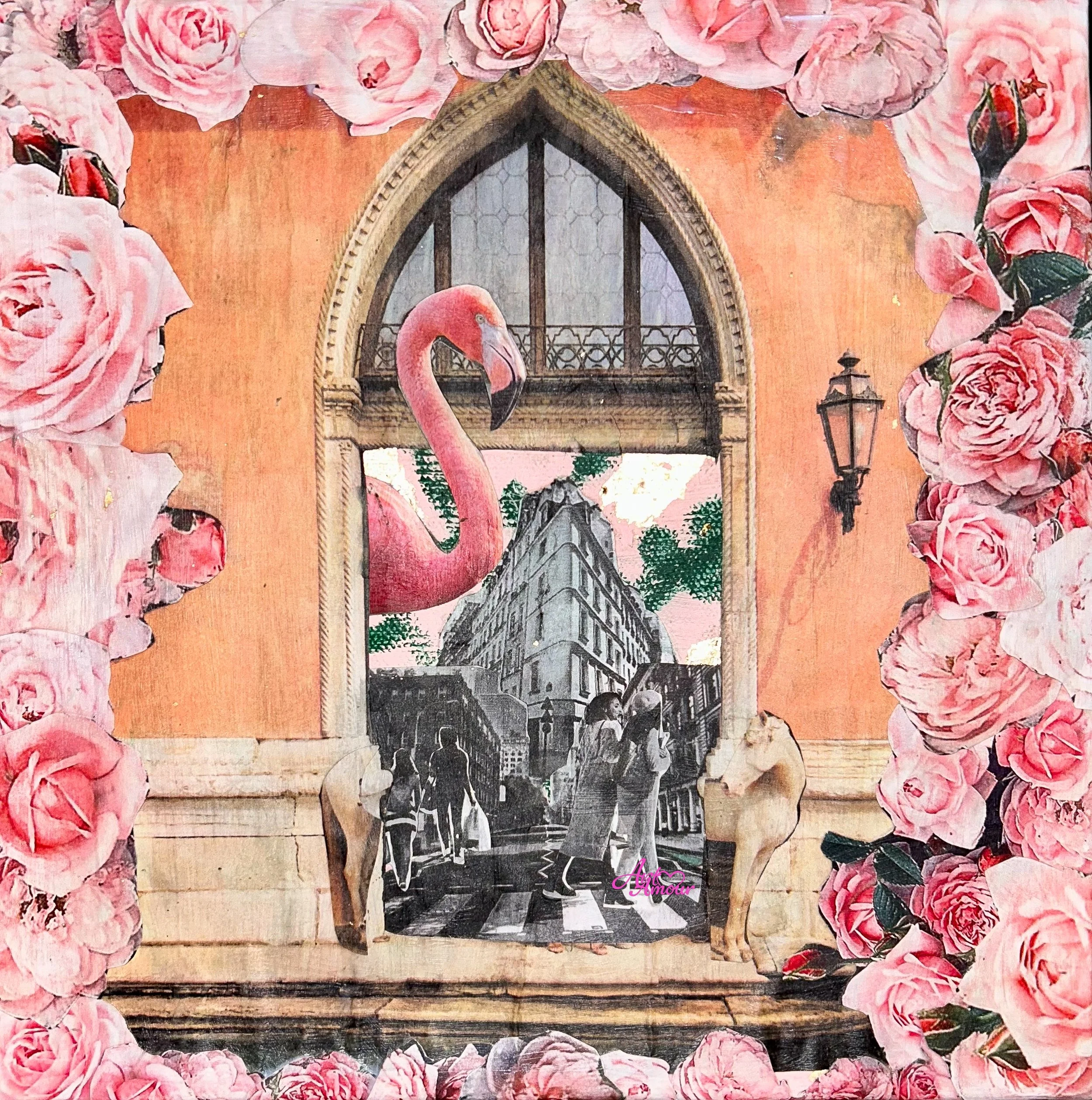The Art of Collage: Transforming Everyday Images into Stories
Collage is more than paper and glue… It’s a language of memory, flowers, and transformation. In this blog, I share how I use collage to turn everyday images into layered stories of resilience, vulnerability, and beauty.
Collage gives me a language, but flowers give me a dialect all my own. Each bloom carries its own story, a symbolism passed down through centuries, and I use them the way a poet uses words…Roses for love and tragedy, forget-me-nots for remembrance, dandelions for resilience, magnolias for grace.
When I layer flowers into my collages, I’m not just decorating, I’m speaking. I’m building a visual vocabulary of femininity, memory, and transformation. Flowers let me say the things I can’t always name out loud. They become stand-ins for emotion, for history, for the parts of myself and my community that deserve to be honored and seen.
Sometimes I think of collage as gardening with paper and memory. 🌿 Each piece is a bed of flowers where fragments, photos, textures, and handwritten words can grow roots together. And just like in nature, there’s beauty in the bloom and in the imperfection of petals that have weathered a storm.
Through this process, I’ve learned that collage isn’t just about what’s pretty, it’s about what’s true. It’s about stitching together contradictions, making space for beauty and brokenness to coexist.
The Storytelling Power of Collage
Every collage I create begins with a story. Sometimes it’s a memory I can’t shake, sometimes it’s a cultural moment I want to respond to, and sometimes it’s just a feeling waiting to be translated. Collage gives me the freedom to hold all of that at once: history, imagination, beauty, and grief layered together until a new truth emerges.
Flowers are central to this storytelling. They act as anchors, guiding the narrative. A single rose placed next to an image of a Black woman might whisper of love, loss, or resilience. Forget-me-nots scattered in the background might point to memory, community, and legacy. A dandelion might be a quiet reminder of strength in the overlooked and ordinary.
What I love about collage is that it honors contradiction. Vulnerability sits next to strength. Beauty leans against decay. Stories overlap, collide, and bloom together in ways that reflect how real life feels messy, layered, but always meaningful.
In that way, collage is more than an art form. It’s a mirror. It shows us how our fragments our histories, our struggles, our small joys can be transformed into something larger than ourselves.
My Process
When I start a collage, I rarely know exactly where it will end. My process is intuitive, part gathering, part listening. I collect images, textures, and materials the way some people collect memories. A photograph, a page from an old magazine, a paint swatch, a pressed flower, all of it has potential to speak.
I lay everything out in front of me like puzzle pieces, waiting to be arranged. I move them around, layer by layer, until something clicks. Sometimes it’s a contrast that draws me in: softness against sharpness, a vibrant bloom against muted tones. Sometimes it’s harmony, the way two fragments feel like they were always meant to belong together.
The flowers always come last, like punctuation. 🌹 They seal the sentence, giving the piece its final tone, whether that’s tender, resilient, tragic, or triumphant.
There’s a lot of trust in this process. Trusting my intuition, trusting the story will reveal itself, trusting that the scraps and fragments can become whole. That’s the magic of collage: it’s never just about what you put together, but what emerges when you let go and allow the pieces to find each other.
For me, collage is more than an art practice, it’s a life practice. It’s proof that fragments can hold beauty, that vulnerability can coexist with strength, and that even the most ordinary image can bloom into something extraordinary when seen with care.
This is the art of collage: transforming everyday images into stories, and reminding us that we are all collages too, layered, complex, and endlessly capable of becoming.
Unleash Your Creativity: Random Collage Ideas and Digital Collage Tips
Collage art is a playground for the imagination, where the unexpected becomes the norm, and the ordinary transforms into the extraordinary. Whether you're piecing together vintage magazine clippings or layering digital elements on a screen, the beauty of collage lies in its boundless possibilities. In this blog post, we’ll dive into random collage ideas to ignite your creativity—from surreal dreamscapes to pop culture mashups—and share digital collage tips to help you master the art of blending, layering, and storytelling. Whether you're a traditionalist with a love for scissors and glue or a digital enthusiast exploring the endless tools of design software, there’s something here for every artist ready to push the boundaries of their craft. Let’s get started!
Collage art is a versatile and expressive medium that allows artists to blend textures, colors, and ideas into a cohesive visual story. Whether you're a seasoned artist or just starting out, experimenting with random collage ideas and digital techniques can open up new creative possibilities. In this blog post, we’ll explore random collage ideas to spark your imagination and share digital collage tips to help you elevate your work.
Random Collage Ideas to Get You Started
1. Nature Meets Technology
- Combine vintage botanical illustrations with futuristic tech elements like circuit boards or holographic textures.
- Use images of trees, flowers, or animals alongside digital glitches or pixelated effects.
2. Surreal Dreamscapes
- Create dreamlike scenes by blending unrelated objects, such as a fish swimming through the sky or a clock melting into a mountain.
- Play with scale and perspective to make the impossible feel real.
3. Pop Culture Mashups
- Mix iconic pop culture figures with unexpected backgrounds or themes. For example, place a famous movie character in a Renaissance painting.
- Use bold, vibrant colors to give your collage a pop art vibe.
4. Personal Memory Collages
- Incorporate old family photos, ticket stubs, or handwritten notes to create a visual diary of your memories.
- Layer these personal elements with abstract shapes or patterns for added depth.
5. Abstract Geometry
- Use geometric shapes, lines, and patterns to create a minimalist yet striking collage.
- Experiment with contrasting colors and textures to make your design pop.
6. Found Object Collages
- Collect random materials like magazine clippings, fabric scraps, or old book pages and arrange them into a cohesive composition.
- Add paint, ink, or stitching to enhance the tactile quality of your work.
7. Cultural Fusion
- Blend elements from different cultures, such as traditional Japanese prints with African tribal patterns.
- Use this approach to explore themes of diversity and interconnectedness.
8. Sci-Fi Worlds
- Create futuristic landscapes by combining space imagery, alien creatures, and futuristic architecture.
- Add metallic or neon accents to give your collage a sci-fi edge.
Digital Collage Tips for Stunning Results
1. Choose the Right Software
- Use tools like Adobe Photoshop, Procreate, or Canva for digital collage creation.
- Experiment with free alternatives like GIMP or Krita if you’re on a budget.
2. Layer Like a Pro
- Use layers to separate elements and experiment with different arrangements.
- Adjust layer opacity and blending modes (e.g., Multiply, Overlay) to create unique effects.
3. Play with Textures
- Import scanned textures like paper, fabric, or paint strokes to add depth to your digital collage.
- Overlay textures on your design to give it a tactile, handmade feel.
4. Experiment with Color Grading
- Use color adjustment tools to create a cohesive color palette.
- Try duotones, gradients, or vintage filters to set the mood of your collage.
5. Incorporate Typography
- Add text elements to your collage for a mixed-media look.
- Experiment with fonts, sizes, and placements to integrate text seamlessly into your design.
6. Use High-Quality Images
- Source high-resolution images from platforms like Unsplash, Pexels, or Pixabay.
- Avoid pixelation by ensuring your images are crisp and clear.
7. Embrace Digital Tools
- Use the clone stamp tool to blend edges seamlessly.
- Experiment with digital brushes to add hand-drawn elements or textures.
8. Create Depth with Shadows and Highlights
- Add drop shadows or highlights to make elements pop off the page.
- Use the dodge and burn tools to enhance lighting effects.
9. Think Outside the Screen
- Combine digital and traditional techniques by printing your digital collage and adding hand-drawn or painted elements.
- Scan the final piece back into your computer for a hybrid artwork.
10. Stay Organized
- Name and group your layers to keep your workspace tidy.
- Save multiple versions of your work to avoid losing progress.
Inspiration for Your Next Collage
- Themes: Explore themes like identity, nostalgia, or environmentalism.
- Color Palettes: Use tools like Coolors or Adobe Color to generate inspiring color schemes.
- Mood Boards: Create a digital mood board on Pinterest to gather ideas and references.
My Final Thoughts
Collage art is all about experimentation and breaking the rules. Whether you’re working with physical materials or digital tools, the key is to let your creativity flow and have fun with the process. Try combining some of the random collage ideas above with the digital tips to create something truly unique. Remember, there are no limits to what you can create—so grab your scissors, glue, or stylus, and start collaging!
What’s your favorite collage style or technique? Share your thoughts in the comments below, and don’t forget to tag us in your collage creations on social media! 🎨✨




